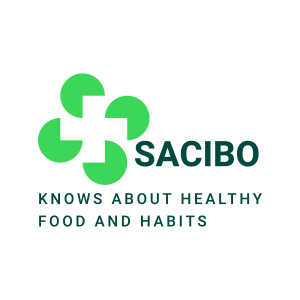- Home
- /
- Healthy Meal
- /
- Products
- /
- Spices
- /
- The Salt
- /
- The Salt and Healthy...
- 1. The Ancient and Timeless Story of Salt
- 2. A Spectrum of Flavor – Exploring the Diverse Types of Salt
- 3. The Science Beneath the Shaker – Understanding Salt and Sodium
- 4. Striking the Balance – Recommended Salt Intake for Optimal Health
- 5. The Salty Paradox – Health Effects of High Salt Consumption
- 6. The Salt and Health Debate – Navigating the Controversies
Salt, the ubiquitous seasoning found in nearly every kitchen around the world, is much more than just a flavor enhancer. It’s a mineral with a profound impact on our health, influencing everything from our blood pressure to our overall well-being. What is connection between salt and healthy eating?
Salt, one of the most fundamental and ancient seasonings in the culinary world, has both tantalized our taste buds and sparked heated debates in the realm of nutrition and health. Its role as a flavor enhancer, a food preservative, and an essential nutrient is indisputable, yet the impact of excessive salt consumption on our well-being remains a subject of intense scrutiny and complex discussion.
In this comprehensive exploration, we embark on a journey through the multifaceted world of salt, dissecting its history, types, physiological significance, and the intricate balance it strikes with sodium and chloride. As we delve deeper, we uncover the profound effects of high salt consumption on our health, from the silent threat of hypertension to its role in heart disease, stroke, and kidney complications.
Ultimately, we strive to strike the right balance between flavor and health, recognizing the importance of personalized approaches and informed choices in our quest for well-being.
Join us as we unlock the salty secret, unravel the controversies, and navigate the path to a healthier and more balanced relationship with this ancient seasoning.
1. The Ancient and Timeless Story of Salt
The history of salt is a captivating tale that takes us back through the annals of time, where this humble mineral held a significance that stretched far beyond its unassuming appearance. As we embark on a journey through the ages, we will explore the vital role salt played in shaping early human civilizations and cultures, from the cradle of salt mining to its widespread use in trade and wealth. Our chapter unfolds the intriguing history of salt, revealing its journey from the depths of the earth to the heart of human existence.
1.1 The Salt of Life’s Origins
Salt, composed of sodium and chloride ions, is an ancient mineral formed by the forces of nature, with its origins dating back to a time long before the first human footsteps on Earth. The geological history of salt is a story of evaporation, crystallization, and countless millennia, resulting in the deposits of sodium chloride that we mine today. It all began when ancient oceans trapped within the Earth’s crust gradually evaporated, leaving behind vast salt deposits hidden deep within the planet.
1.2 The Pioneers of Salt Production
The early history of salt production is intrinsically linked to human survival. As our ancestors learned to harness the power of salt, they discovered a powerful method for preserving food. The earliest records of salt extraction date back to ancient civilizations such as the Egyptians, Chinese, and the Sumerians. These early salt pioneers utilized the natural evaporation of saltwater or simply scraped salt from the surface of salt-rich regions, laying the foundations for this essential mineral’s prominence in human history.
1.3 Salt: The Currency of Empires
As civilizations grew and expanded, salt assumed a remarkable role in their rise to power and wealth. In the annals of history, salt became synonymous with value and status, often serving as a form of currency or a commodity of immense worth. Notable historical accounts, such as the Roman soldiers’ salaries paid in salt (hence the term “salary”), underscored the critical role that salt played in the development of empires and societies.
1.4 The Salt Routes and Ancient Trade
One of the most extraordinary aspects of salt’s history is its connection to ancient trade networks. From the “white gold” routes in the Sahara Desert to the bustling markets of China’s Silk Road, salt was a coveted commodity. Its transportation and trade routes became essential arteries of early commerce, uniting diverse cultures and fostering cultural exchange and economic growth.
1.5 The Salt of Preservation and Flavor
Salt’s role as a preservative was critical to the survival of ancient communities, allowing them to store food for lean times and long journeys. This preservation capacity revolutionized food storage and distribution, supporting the growth of cities and the advent of long-distance trade. Furthermore, as communities discovered its culinary value, salt became an indispensable ingredient in the kitchens of the world, forever influencing the flavors and traditions of diverse cuisines.
1.6 The Legends and Myths Surrounding Salt
Salt’s impact extended far beyond the physical world; it also permeated the realm of folklore and mythology. Across various cultures, salt was often linked to purification, protection, and even spiritual significance. These ancient beliefs and legends offer a glimpse into the profound, multifaceted relationship that humans have shared with this unassuming mineral throughout history.
In the pages that follow, we will delve deeper into the various types of salt and their unique characteristics, exploring the culinary, cultural, and historical dimensions of this mineral. But before we venture into the diverse world of salt, this chapter invites you to journey back to the roots of human civilization, where salt was more than a seasoning—it was a symbol of life, wealth, and resilience.
2. A Spectrum of Flavor – Exploring the Diverse Types of Salt
The world of salt is not as monochromatic as it may seem at first glance. While we may commonly think of salt as the familiar white granules that adorn our tables, there is a captivating spectrum of salt varieties, each with its distinct origins, flavors, and culinary applications.
In this chapter, we will embark on a journey to discover the captivating world of salt’s many faces, exploring the differences between table salt and sea salt, the unique characteristics of kosher salt, the rising popularity of Himalayan pink salt, and the intriguing universe of gourmet salts.
2.1 Table Salt: The Kitchen Staple
Table salt, often found in cylindrical shakers on kitchen tables worldwide, is the most common and widely used salt variety. It is typically sourced from underground salt deposits and processed to remove impurities, leaving behind fine, uniformly sized crystals. Table salt is celebrated for its versatility and its ability to dissolve evenly in cooking, making it an essential companion in the culinary world.
2.2 Sea Salt: Nature’s Handcrafted Gem
Sea salt, a testament to the beauty of nature’s craftsmanship, is harvested by evaporating seawater, leaving behind irregularly shaped crystals and a rich palette of minerals and trace elements. The flavor of sea salt is often described as briny, with unique nuances depending on its source.
Sea salt, with its rustic allure, is a culinary gem that has captured the imagination of chefs and food enthusiasts alike. This natural wonder is the result of evaporating seawater, leaving behind crystalline salt that retains the flavors and minerals of the ocean. What sets sea salt apart is its diversity, boasting a range of textures, colors, and flavors depending on its source and processing method.
From the delicate flakes of fleur de sel to the coarse, mineral-rich grains of Himalayan pink salt, sea salt adds depth and complexity to dishes, enhancing the natural flavors of ingredients.
While it is often celebrated for its clean and unrefined nature, it’s important to remember that sea salt, like any other salt, should be used in moderation. So, whether you’re sprinkling it as a finishing touch on a gourmet dish or using it in everyday cooking, sea salt is a reminder of the culinary wonders nature offers and the art of balancing flavor and health in our kitchens.
2.3 Kosher Salt: The Chef’s Secret Ingredient
Kosher salt, known for its large, coarse grains, holds a special place in the hearts of professional chefs and home cooks alike.
What does it mean “kosher,” and what sets it apart?
Kosher salt is so named not because it adheres to Jewish dietary laws (kashrut) in and of itself, but rather because of its historical use in the koshering process. Koshering is the method used to remove blood from meat, which is a requirement in Jewish dietary laws. The coarse texture of kosher salt makes it particularly effective at drawing out blood from the meat, which is an essential step in the koshering process.
What is difference
Kosher salt differs from other types of salt, like table salt, in a few key ways.
First, it typically has larger, irregularly shaped grains, which makes it easier to handle and control when seasoning food. This feature is especially valued by chefs who appreciate the tactile quality of kosher salt in their dishes.
Second, kosher salt lacks many of the additives, like iodine or anti-caking agents, commonly found in table salt, giving it a cleaner, more pure salt flavor.
Finally, its larger grains mean that it takes longer to dissolve, making it suitable for certain culinary techniques like dry brining.
Kosher salt is more than just a seasoning; it’s a fundamental element in the art of koshering, the process of making food conform to Jewish dietary laws. This salt has a unique, coarse texture, which makes it perfect for drawing out blood from meat, a crucial step in koshering.
Beyond religion
But beyond its religious significance, kosher salt has gained popularity in the culinary world for its ability to enhance the natural flavors of dishes and its ease of handling. Its larger grains make it easier to control and season food precisely. Chefs appreciate it for its versatility, using it for everything from seasoning to brining. As it dissolves more slowly than table salt, it clings to food surfaces, making it ideal for dry brining, a technique that adds flavor and tenderness to meats. In the realm of salt, kosher salt holds a unique position, symbolizing both tradition and culinary innovation.
2.4 Himalayan Pink Salt: The Trend and the Treasure
In recent years, Himalayan pink salt has gained immense popularity for its rosy hue, distinctive flavor, and alleged health benefits.
Himalayan pink salt is a true marvel of nature, hailing from the heart of the Himalayan mountains. What sets it apart from other salts is its captivating, rosy hue, which is the result of the trace minerals it contains, including iron and magnesium.
Beyond its visual appeal, Himalayan pink salt is celebrated for its subtle, yet complex flavor profile, making it a versatile ingredient in both savory and sweet dishes.
Its larger, irregular grains make it a preferred choice for grinders, offering a satisfying tactile experience while seasoning. But perhaps what truly sets it apart is its alleged health benefits, often attributed to its mineral content. While scientific support for these claims is limited, Himalayan pink salt remains a captivating and sought-after ingredient in the culinary world, appreciated for its flavor, texture, and the touch of exoticism it brings to the kitchen.
2.5 Gourmet Salts: From All Corners of the Earth
The world of gourmet salts is a treasure trove of flavors and textures. We’ll venture into the diverse landscapes of salt production worldwide, discovering exotic salts such as Hawaiian black lava salt, smoked salt, and even salt infused with truffles. Each of these salts brings a new dimension to the culinary experience, and we’ll explore how they are used in various cuisines and specialties.
As we journey through these various salt varieties, we will peel back the layers of history, geography, and gastronomy that have shaped their unique profiles. Salt, it turns out, is not a one-size-fits-all mineral; it’s a dynamic and diverse world that enhances the flavors of our dishes in countless ways.
3. The Science Beneath the Shaker – Understanding Salt and Sodium
Beneath the seemingly straightforward act of sprinkling salt on your meal lies a complex world of chemistry and biology. In this chapter, we will delve deep into the elemental components of salt: sodium and chloride. From the fundamental chemistry to the physiological importance in our bodies, we will uncover the intricate roles that sodium and chloride play in our health and well-being. Join us on a scientific expedition to understand the essential components that give salt its unique character.
3.1 Sodium and Chloride: A Dynamic Duo
Salt, chemically known as sodium chloride (NaCl), is composed of two fundamental elements: sodium and chloride. These ions are the linchpins of the salty taste and unique properties of salt.
Sodium and chloride, like a dynamic duo in the world of chemistry and biology, are the unsung heroes behind the salty goodness that we often take for granted. Sodium, with its electrifying presence, powers our nervous system and muscles, orchestrating the intricate dance of nerve impulses and muscle contractions that enable us to move and feel.
Chloride, on the other hand, might be less in the spotlight, but its role is equally crucial. As an anion, it complements sodium’s cationic prowess, helping maintain our acid-base balance and even assisting in the fiery production of gastric acid in our stomachs.
Together, these two elements create the harmonious composition of salt, and their synergy extends far beyond the culinary realm, shaping the very fabric of our biology. Sodium and chloride are a testament to the awe-inspiring complexity and elegance of the chemical world that underpins our health and flavor experiences.
3.2 The Sodium Puzzle: Electrolyte Extraordinaire
Sodium, as an electrolyte, holds the key to vital processes within our bodies. Sodium, often seen as the “silent conductor” in the grand orchestra of our physiological processes, plays a multitude of critical roles in maintaining our health. Its role in transmitting nerve impulses is nothing short of remarkable.
a. Nerve impulse
In the world of neurons, sodium takes center stage by initiating and propagating nerve signals. When a nerve cell is stimulated, sodium channels open, allowing an influx of sodium ions. This sudden surge of positively charged sodium ions leads to a change in the electrical potential of the cell, creating a nerve impulse that travels along the nerve fiber. In essence, sodium is the catalyst that enables our ability to feel, move, and respond to our environment.
b. Muscles
But sodium’s contributions extend far beyond the realm of nerve impulses. In the world of muscle function, sodium remains an indispensable player. When a muscle is stimulated to contract, sodium channels are again summoned into action. The flow of sodium into muscle cells triggers the sliding of actin and myosin filaments, leading to muscle contraction. Without sodium’s involvement, our voluntary and involuntary muscles, from those powering our limbs to our heart, would be paralyzed.
c. Fluid balance
Furthermore, sodium’s delicate orchestration of fluid balance within our bodies is of paramount importance. It is sodium that regulates the volume of extracellular fluid, the fluid outside our cells. By osmosis, water follows sodium; where sodium goes, water flows. This process helps maintain the body’s hydration levels and blood pressure. In cases of excess sodium intake, the body retains more water, leading to an increase in blood volume and, consequently, higher blood pressure.
About water and its role in our well-being read here: Water and the Human Body: The Vital Connection
While this mechanism is vital for our survival, it can also become a double-edged sword when sodium intake exceeds healthy limits, contributing to hypertension and related health issues. Sodium’s precise control over fluid balance exemplifies the intricacies of our physiological systems, highlighting the crucial, and at times delicate, nature of its role in our well-being.
About hight pressure diet read in the article: Reducing high blood pressure
Sodium, often considered in the context of blood pressure regulation, plays a pivotal part in our daily lives, whether we realize it or not.
3.3 Chloride: The Unsung Anion
Chloride, while less celebrated than its partner sodium, is no less essential. It serves as an anion, balancing the charge of sodium and contributing to critical physiological processes.
Chloride, often the unsung hero in the world of ions, plays a remarkably multifaceted role in maintaining our health and equilibrium.
a. Digestion
One of its most intriguing tasks is its involvement in gastric acid production. Housed within the lining of our stomach are specialized cells known as parietal cells. These cells are responsible for secreting hydrochloric acid (HCl), a powerful acid essential for digesting the foods we consume.
Chloride ions, transported into these parietal cells, are a crucial component of HCl. When they combine with hydrogen ions, the result is the production of hydrochloric acid, a highly acidic fluid that breaks down proteins and helps us digest our meals. This acidic environment also serves as a defense mechanism against ingested pathogens, underlining chloride’s significance in both our digestion and immune response.
b. Ph-balance
Furthermore, chloride’s role extends to a fundamental task that often goes unnoticed: maintaining the body’s acid-base balance, also known as pH balance. Our blood, bodily fluids, and cells need to maintain a delicate pH level for proper functioning. Chloride ions contribute to this balance by helping regulate the exchange of bicarbonate (HCO3-) ions in and out of our red blood cells.
This exchange helps to maintain the optimal pH of our blood, ensuring it remains slightly alkaline. When our body’s pH deviates from this delicate balance, it can have significant health consequences, affecting enzymes, cellular processes, and even the stability of our proteins. Chloride’s part in this acid-base dance exemplifies its versatility and importance in maintaining our internal environment and overall health.
3.4 The Delicate Balance of Sodium and Potassium
The balance between sodium and another electrolyte, potassium, is paramount to our health. The intricate dance between sodium and potassium, two key electrolytes, is not just a subtle physiological phenomenon; it’s a choreography that underpins our heart health, nerve signaling, and overall well-being.
a. Cardiovascular health
In the realm of cardiovascular health, this dance is nothing short of crucial. Sodium, with its positive charge, plays a role in initiating each heartbeat, while potassium, with its opposing negative charge, contributes to resetting the heart’s electrical activity.
The interplay between these two elements regulates the heart’s rhythm and ensures that it beats in a coordinated and efficient manner. Any disruption in this balance, such as an excess of sodium or a deficiency of potassium, can lead to arrhythmias or other heart-related issues.
Thus, maintaining this balance becomes the conductor of our heart’s symphony, a rhythm essential for our very existence.
b. Nerve signaling
The ballet of sodium and potassium is equally critical in the realm of nerve signaling. Nerve cells, or neurons, communicate through electrical impulses. Sodium initiates these impulses by allowing an influx of positively charged ions into the nerve cell, creating an electrical current. Potassium, on the other hand, assists in restoring the cell’s electrical balance after the impulse has been transmitted.
This seesaw of sodium and potassium ensures that nerve signals can be both initiated and terminated, making it possible for us to feel sensations, move our muscles, and think. An imbalance in this delicate dance can lead to nerve overactivity, nerve damage, or even seizures. Thus, this synchronized performance is not just vital for our reflexes but also for our higher cognitive functions.
c. Overall well-being
Beyond heart health and nerve signaling, the sodium-potassium balance is a foundational aspect of our overall well-being. The interplay between these two electrolytes is not just about maintaining physical health but also emotional and cognitive stability. Any disturbances in this balance can lead to symptoms such as fatigue, muscle weakness, or mood swings. In severe cases, imbalances can lead to conditions like hypertension, which is a major risk factor for heart disease, or hypokalemia, a condition characterized by low potassium levels that can be life-threatening.
As we delve deeper into the intricate mechanisms that govern our bodies, it becomes abundantly clear that the sodium-potassium dance is not just a physiological curiosity but a fundamental aspect of our health and vitality, one that we should appreciate and nurture for our overall well-being.
3.5 Salt’s Chemical Composition and Structure
While it may seem straightforward, salt’s chemical composition and crystal structure hold secrets to its unique properties.
a. Structure
The cubic crystalline structure of sodium chloride, more commonly known as table salt, is a fascinating example of nature’s precision and order. Underlying its humble appearance are millions of sodium and chloride ions, meticulously arranged in a repeating cubic lattice.
This arrangement not only gives salt its characteristic crystalline form but also plays a vital role in influencing its properties, from solubility to texture, and even its culinary applications.
b. Composition
One of the most striking features of this cubic structure is its incredible regularity. Each sodium ion is surrounded by six chloride ions, and vice versa. This repetitive pattern extends in all three dimensions, forming an unbroken network of ions.
This uniformity is one of the key factors influencing salt’s solubility. When salt is added to water, the water molecules interact with the charged ions in the salt crystal. These interactions break the bonds between sodium and chloride, allowing the salt to dissolve.
The highly ordered structure of the salt crystal ensures that it dissolves in a controlled and predictable manner, releasing its savory goodness into the solution.
c. Interraction
The crystalline structure of salt also affects its texture and the way it interacts with food. When salt is added to dishes, it doesn’t simply disappear into the mixture.
Instead, its cubic crystals remain intact, creating a tactile sensation on the palate. This texture adds a delightful crunch or burst of flavor that enhances various dishes, from sprinkled sea salt on chocolate to kosher salt on a juicy steak.
This granular nature is why different types of salt, with various crystal sizes, have become staples in the culinary world. The texture that salt lends to food isn’t just a matter of taste but a multisensory experience, adding depth and contrast to every bite.
In culinary applications, the cubic crystalline structure of sodium chloride plays a vital role in enhancing flavors. The slow dissolution of salt in a dish allows for a gradual release of its saline essence, subtly intensifying the overall taste. This gradual infusion is ideal for marinating meats, brining, or slow-cooked dishes, as it imparts a consistent and balanced seasoning. In contrast, rapid-dissolving salt, such as finely ground table salt, is often used for baking and in recipes where precise measurements are crucial. So, the crystalline structure of salt, seemingly an invisible aspect of our culinary world, is a key player in enhancing the flavors and textures of our favorite dishes, highlighting the intricacies of chemistry and sensory delight in the kitchen.
3.6 The Science of Taste: How Salt Enhances Flavor
Salt, the seemingly simple mineral, possesses a remarkable ability to enhance flavors, earning its place as a culinary cornerstone. It achieves this through a process known as flavor enhancement, where salt intensifies and elevates the existing flavors of a dish.
a. Complex interplay result
But how does this mineral achieve such a feat? At its core, salt works as a flavor enhancer by increasing the perception of the basic taste sensations—sweetness, sourness, bitterness, and umami—while also suppressing the perception of saltiness and bitterness.
This complex interplay results in a more balanced, harmonious, and amplified overall taste. In essence, salt is like the conductor of a flavor symphony, orchestrating the sensory experience and bringing out the best in every ingredient.
b. Extra layer
The intriguing relationship between salt and the fifth taste, umami, adds an extra layer of complexity to the world of flavors. Umami, often described as a savory or meaty taste, is responsible for the mouthwatering richness of foods like cheese, mushrooms, and soy sauce. Interestingly, salt and umami are closely intertwined, and their synergy creates a unique and irresistible flavor experience.
Salt enhances the perception of umami, making umami-rich foods taste even more savory and satisfying. When umami compounds interact with sodium ions (found in salt), they become more soluble and, therefore, more available to our taste buds. This enhanced umami perception is one of the reasons why salt is often used in combination with umami-rich ingredients like soy sauce, miso, and aged cheeses.
This culinary marriage exemplifies the synergy between these taste elements, elevating the overall depth and complexity of flavor in various dishes, from savory stews to rich broths. The relationship between salt and umami is a testament to the intricate dance of flavors that unfolds in our palates, highlighting the culinary magic that can be created when we understand the nuances of taste.
Salt, it turns out, is not just a matter of seasoning; it’s an intricate and indispensable part of our lives, rooted in the very chemistry of our existence.
4. Striking the Balance – Recommended Salt Intake for Optimal Health
In our quest to understand salt and its impact on our health, it’s imperative that we examine the guidelines and recommendations surrounding salt consumption. Salt, while essential for our bodies to function properly, can have adverse effects when overindulged. This chapter delves into the various aspects of recommended salt intake, from the daily sodium requirements to dietary guidelines that cater to different age groups and health conditions. Join us in this exploration of finding the equilibrium between salt as a necessary nutrient and salt as a potential health hazard.
4.1 Daily Sodium Requirements: A Delicate Balance
To maintain a healthy body and prevent health issues such as high blood pressure and heart disease, it’s crucial to strike a delicate balance when it comes to sodium intake.
a. Balance as always crucial
Daily sodium requirements represent a delicate balance, where the line between sufficiency and excess can have profound implications for our health. The human body relies on sodium for a range of crucial physiological functions, such as maintaining fluid balance, regulating blood pressure, and facilitating nerve and muscle function.
However, too much sodium can tip this balance towards adverse health effects. Therefore, health organizations like the World Health Organization (WHO) and the Centers for Disease Control and Prevention (CDC) have established recommended daily sodium intake levels to guide individuals toward a healthy equilibrium.
b. Daily intake
The recommendations for daily sodium intake are typically expressed in milligrams (mg) or grams (g) of sodium, and they vary depending on factors such as age, sex, and activity level.
For example, adults are often advised to consume no more than 2,300 mg (approximately 2.3 g) of sodium per day, which is roughly equivalent to one teaspoon of table salt. However, for certain individuals, such as those with high blood pressure, the recommended limit may be as low as 1,500 mg (1.5 g) per day.
Striking the right balance involves being mindful of your sodium consumption, reading food labels, and making informed dietary choices that align with your individual health needs.
In this intricate dance between sodium and health, finding the perfect equilibrium is crucial. Consuming too little sodium can result in hyponatremia, a condition characterized by low blood sodium levels, which can lead to muscle cramps, weakness, and even seizures. Conversely, overindulging in sodium can increase blood pressure, increasing the risk of heart disease, stroke, and other health issues. As we explore the world of daily sodium requirements, we gain insight into the complexity of sodium’s role in our bodies and the pivotal importance of maintaining this delicate balance for our overall well-being.
4.2 Dietary Guidelines: The Blueprint for Health
Dietary guidelines serve as a blueprint for health, offering a structured framework to help individuals make informed choices about their diets. In a world where dietary decisions can be overwhelming, these guidelines provide a compass, guiding us toward the path of balanced and health-conscious nutrition.
They are meticulously crafted by health organizations and experts, drawing on extensive research and knowledge, and tailored to the specific needs of diverse populations. Within the context of salt and sodium, dietary guidelines provide crucial advice on managing salt intake, reading food labels, and making healthier food choices, ultimately supporting us in our quest to strike the right balance between flavor and health.
These guidelines are more than just recommendations; they are invaluable tools that empower individuals to take charge of their well-being and foster healthier eating habits for a lifetime.
4.3 Salt and Age: Tailoring Recommendations
As we age, our bodies undergo transformations that can influence how we process and require sodium.
Salt’s impact on our health is not uniform across the different stages of life, and as we age, the need to tailor salt recommendations becomes increasingly evident. The dietary requirements of children, adults, and the elderly vary significantly, reflecting the body’s evolving abilities and vulnerabilities.
For instance, young children tend to have lower sodium needs due to their smaller body size, while older adults may face challenges in sodium regulation and blood pressure control. As we navigate the diverse landscapes of these age-specific considerations, it becomes clear that understanding salt and its role in health is not a one-size-fits-all endeavor.
The nuances of age-appropriate recommendations underscore the importance of personalized dietary choices and highlight the significance of adapting our approach to salt intake as we journey through the different phases of life.
4.4 Special Considerations: Health Conditions and Salt
Special considerations come into play when health conditions intersect with salt consumption. Certain medical conditions, such as hypertension (high blood pressure) and kidney disease, demand tailored approaches to salt intake.
For those with hypertension, reducing sodium intake is a primary strategy in managing blood pressure, as excessive salt can cause the body to retain water and increase blood volume.
Similarly, individuals with kidney disease may need to limit salt to prevent the accumulation of excess fluids in the body. Navigating the fine line between maintaining health and enjoying flavorful meals becomes a paramount concern for those managing these conditions, and it underscores the pivotal role of dietary choices in healthcare.
Addressing special health considerations in the context of salt intake exemplifies the interplay between culinary and medical worlds, emphasizing the importance of an individualized approach to nutrition for optimal well-being.
4.5 Hidden Sources of Salt: Unmasking the Culprits
Hidden sources of salt lurk in our diets, often camouflaged within the foods we consume daily. These concealed culprits can significantly contribute to excessive sodium intake, even when we believe we are making healthy choices.
Processed foods, canned soups, condiments, and even seemingly innocent items like bread and breakfast cereals can harbor high levels of salt. The lack of transparency regarding salt content in these products makes it essential for consumers to become diligent label readers and informed shoppers.
By unmasking these hidden sources of salt, we can take control of our dietary decisions and make healthier choices, ultimately reducing our risk of health issues such as hypertension and heart disease. It’s a call to become savvier consumers and to advocate for clearer labeling and better-informed food choices, all in the name of our long-term health and well-being.
Balancing the necessity of salt with the potential risks it poses is a complex undertaking. It requires a thorough understanding of recommended intake levels, dietary guidelines, and individual factors that influence how salt interacts with our bodies. As we navigate this chapter, we’ll uncover the tools and knowledge necessary for achieving the equilibrium between salt as an essential nutrient and salt as a health concern, empowering us to make informed choices about our diets and overall well-being.
5. The Salty Paradox – Health Effects of High Salt Consumption
The relationship between salt and our health is a paradoxical one. While salt is an essential mineral for our bodies to function optimally, excessive salt consumption can lead to a wide array of health issues. In this chapter, we will explore the multifaceted effects of high salt intake on our health, shedding light on the intricate connection between salt and conditions such as hypertension, heart disease, stroke, and kidney problems. As we dive into this complex and often contradictory realm, we’ll uncover the ways in which salt, when consumed in excess, can compromise our well-being.
5.1 The Silent Threat
Hypertension, often referred to as the “silent threat,” lurks stealthily in our bodies, exerting its influence without much fanfare until its consequences manifest. The intricate dance between salt intake and high blood pressure, known as hypertension, is a prime example of the delicate balance that underscores our health.
Excess salt in the diet can lead to the retention of water in our blood vessels, causing an increase in blood volume and, subsequently, blood pressure. This silent threat, if left uncontrolled, can significantly heighten the risk of more severe health conditions, including heart disease, stroke, and kidney damage.
Understanding the relationship between salt and hypertension is a pivotal step in recognizing the subtle yet profound impact that our dietary choices can have on our well-being, paving the way for more mindful consumption and improved long-term health.
About diet for decreasing high blood pressure read in the article: Reducing high blood pressure
5.2 Cardiovascular Conundrum: Salt and Heart Disease
The cardiovascular conundrum, where salt and heart disease intersect, illuminates the intricate relationship between our dietary choices and the health of our most vital organ. High salt intake can lead to a domino effect of health issues, especially when it comes to the heart.
The excessive sodium in our bloodstream prompts water retention, increasing blood volume and thereby placing undue strain on the heart. This prolonged burden can contribute to a range of cardiovascular conditions, from coronary artery disease, where arteries that supply blood to the heart become narrowed, to heart attacks, where the blood supply to the heart muscle is suddenly blocked.
The association between salt and heart disease is not just an abstract notion but a concrete reality that underscores the significance of salt reduction for our cardiovascular well-being. Understanding the dynamics of this conundrum empowers us to take proactive steps towards heart-healthy dietary choices, ultimately lowering our risk of heart-related issues in the long run.
5.3 Salt and Stroke: A Tangled Web
The relationship between salt and stroke weaves a tangled web of health implications, underscoring the multifaceted nature of this life-altering neurological condition. Excess salt in our diets sets the stage for a complex cascade of events within the body. High sodium levels can lead to elevated blood pressure, increasing the risk of a stroke.
When blood pressure rises to the point of hypertension, it damages the blood vessels, making them more susceptible to rupture or blockage, which are underlying mechanisms of stroke. The intertwined threads of salt and stroke highlight the urgency of managing salt intake and maintaining blood pressure within healthy ranges.
By unraveling this intricate web of factors connecting salt and stroke, we gain insight into the importance of salt reduction as a preventive measure against this potentially devastating condition, reinforcing the profound impact our dietary choices can have on our long-term neurological health.
5.4 Kidney Consequences: Nephrons and Salt
The kidney’s intricate network of nephrons is a testament to the marvels of human physiology, tasked with filtering and regulating salt in our bodies. However, high salt consumption can throw this finely tuned system off balance, resulting in kidney consequences.
Excessive sodium levels in the bloodstream can burden the kidneys by forcing them to work overtime to filter out and excrete the surplus salt. The continuous strain on the kidneys can lead to issues such as kidney stones, painful crystalline deposits that can form when salt and minerals accumulate in the urinary tract.
Additionally, the relentless effort to manage salt levels can cause long-term harm, potentially impairing kidney function.
This dynamic interplay between nephrons and salt underscores the critical need to manage our salt intake, not only for the health of our kidneys but for our overall well-being. Understanding the kidney’s pivotal role in maintaining salt balance serves as a stark reminder of the importance of moderation in our dietary choices to protect our vital organs.
As we embark on this chapter, we will encounter the dual nature of salt, acknowledging its essential role in our bodies while also recognizing its potential for harm when consumed in excess. Salt, in essence, becomes a double-edged sword that highlights the intricate balance we must strike between flavor and health. Our exploration into the health effects of high salt consumption will provide a comprehensive understanding of the risks associated with excessive salt intake, empowering us to make more informed dietary choices for the sake of our well-being.
In the world of nutrition and health, few topics have sparked as much debate and controversy as the role of salt. Some argue that reducing salt intake is a crucial step in preventing and managing a range of health issues, while others contend that the risks associated with salt consumption have been exaggerated.
In this chapter, we will delve into the heart of the salt and health debate, examining the scientific evidence, the conflicting viewpoints, and the ongoing research.
Our journey will take us through the controversies surrounding salt, the limitations of current dietary recommendations, and the need for a balanced perspective that recognizes the diversity of individual needs and experiences.
6.1 The Salt Paradox: Sorting Fact from Fiction
The salt paradox is a perplexing puzzle that has long occupied the minds of scientists and health experts.
a. Paradox
On one hand, there is a robust body of evidence linking excessive salt intake to health concerns, particularly hypertension, which can lead to heart disease and stroke.
On the other hand, numerous studies have introduced an element of doubt, suggesting that the relationship between salt and health may not be as straightforward as once thought. This paradox is, in part, fueled by variations in individual sensitivity to salt, meaning that while some people may experience significant increases in blood pressure due to high sodium intake, others might remain relatively unaffected.
More about principle of bio-individuality read here: First principle of Healthy Eating: Your Bio-Individuality
b. What is the matter here
The nuances of this paradox challenge our ability to draw concrete conclusions and establish universal dietary recommendations. It’s an issue that underscores the complexities of nutritional science and the importance of considering individual differences in our pursuit of better health.
To unravel the salt paradox, it’s crucial to examine the limitations and intricacies of the existing research. Many studies on salt intake rely on self-reported dietary data, which can be notoriously unreliable.
c. Other factors
Additionally, the potential for confounding factors, such as lifestyle and genetics, further muddles the picture. These challenges have led some to argue that the risks associated with salt consumption may be overstated, and that certain populations may not need to adhere as strictly to low-salt diets as previously believed.
However, it’s important to remember that uncertainty in scientific research is not an excuse for inaction. While the salt paradox may persist, there is substantial evidence linking high salt intake to health issues, and the precautionary principle suggests that reducing salt intake remains a wise approach to safeguard our health.
As we delve into the salt and health debate, we must navigate the complexities of the salt paradox, considering the nuanced interplay of scientific findings, individual variations, and the need for practical and personalized dietary recommendations..
6.2 The Salt and Genetics Connection: A Personalized Approach
Advancements in genetic research have shed light on the intricate connection between salt and our individual genetic makeup. It’s becoming increasingly clear that the relationship between salt consumption and health is not one-size-fits-all.
a. Specific genes
Recent studies have identified specific genes that can influence how our bodies respond to sodium, making some people more salt-sensitive than others. This salt sensitivity can have profound implications for an individual’s risk of developing conditions like hypertension and heart disease.
The emerging field of nutrigenomics is at the forefront of this personalized approach to nutrition. It explores the interaction between our genes and our dietary choices, providing insights into how genetics can shape our response to salt and other nutrients.
More about principle of bio-individuality read here: First principle of Healthy Eating: Your Bio-Individuality
b. Future
Understanding the genetics of salt sensitivity offers the potential for a more personalized approach to dietary recommendations. In the future, individuals may undergo genetic testing to determine their salt sensitivity and receive dietary guidance tailored to their genetic profile.
For those who are salt-sensitive, a lower-sodium diet may be strongly recommended, while others may have more flexibility in their salt intake.
This personalized approach to nutrition not only enhances the precision of dietary advice but also empowers individuals to make informed choices that align with their unique genetic predispositions. It’s a transformative shift in the way we view nutrition and health, recognizing that one size does not fit all, and that our genes play a pivotal role in shaping our dietary needs and responses.
6.4 Striking the Balance: Informed Choices for Health
a. Balance between flavor and health
Striking the balance between flavor and health is at the heart of the salt and health debate. It’s a delicate equilibrium that requires careful consideration, awareness, and informed choices.
While scientific research and genetic insights provide valuable knowledge, individuals bear the responsibility of translating this information into practical dietary decisions that align with their health goals.
Striving for a personalized approach to nutrition is a pivotal step. Understanding one’s own salt sensitivity, if applicable, allows for a more tailored salt intake that minimizes health risks while still savoring the flavors of food.
b. Label study
Informed choices for health involve more than just individual responsibility; they require a broader perspective on the social and environmental factors that influence our dietary habits. Advocating for clearer food labeling, reduced salt content in processed foods, and informed public policies is a collective effort that empowers individuals to make healthier choices.
It also calls for industry stakeholders to engage in responsible practices that prioritize consumer well-being over profits.
c. Ethic and and other consideration
Ultimately, the salt and health debate invites us to recognize that our dietary choices are not just about flavor and health but also about broader ethical and social considerations.
It’s a call to action for more informed and conscious choices, not only to preserve our own health but also to contribute to the well-being of our communities and the environment.
As we navigate this complex landscape, striking the balance between flavor and health becomes an intricate dance, where every step we take contributes to the overall harmony of our lives and the world we inhabit.
As we traverse the landscapes of scientific inquiry, genetic intricacies, industry interests, and policy implications, we will gain a comprehensive understanding of the salt and health debate. It is a multifaceted issue that extends far beyond our kitchen tables, encompassing diverse perspectives and interests. By exploring these dimensions, we can develop a more nuanced and informed approach to salt consumption, one that empowers us to make conscious choices that prioritize both our love for flavor and our commitment to good health.
The Salt of the Earth and the Health of Ourselves
Salt, an ancient mineral with a complex history, continues to shape our lives and health in the present day. While it enhances the taste of our food, its impact on our health cannot be ignored. As we have journeyed through the story of salt, from its historical significance to its diverse forms and health implications, we’ve gained a deeper understanding of the salty truth. Striking a balance between flavor and health is the challenge we face in our modern world. The next time you reach for the salt shaker, remember the profound influence it has on your well-being, and consider the choices you make to ensure a healthier, more balanced future.
Contraversies existance
As we draw the curtains on our expedition through the intricate world of salt and its profound effects on health, we find ourselves at a crucial juncture. Salt, an ancient and indispensable seasoning, has both enriched our culinary experiences and raised questions about its potential impact on our well-being. The debate surrounding salt’s role in health is a dynamic and multifaceted one, teetering between its necessity as a vital nutrient and the risks associated with excessive consumption.
Our journey has revealed the salt paradox, a confounding puzzle that has eluded simple explanations. It’s a paradox that underscores the uniqueness of our individual responses to salt and the complex interplay of factors, from genetics to lifestyle, that influence our health outcomes. In our exploration, we’ve encountered the hidden influences of industry and policy, recognizing the significant role these factors play in shaping our dietary choices and influencing public health.
Conclusion
Yet, the conclusion is far from a foregone one. As individuals, communities, and societies, we possess the power to make informed choices about our salt consumption. We can reduce our salt intake, not by eliminating flavor from our lives, but by reimagining our relationship with salt. Culinary education, food labeling, collaboration between the food industry and public health organizations, and public awareness campaigns all offer strategies to help us strike a better balance between flavor and health.
In the end, our relationship with salt is a nuanced dance, a choreography between our desire for flavor and our commitment to health. It is a recognition that salt, as one of the fundamental elements of the Earth, is inextricably tied to the health of ourselves and our planet. As we unlock the salty secret, we unearth the potential for a healthier and more balanced future—one where flavor and well-being can coexist harmoniously on our plates, offering us a savory, satisfying, and healthy way forward.
































































0 Comments